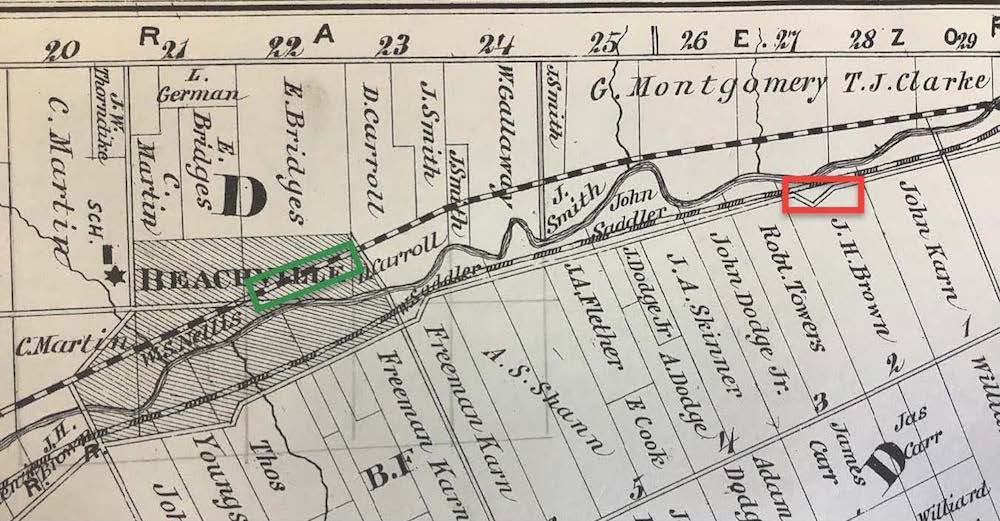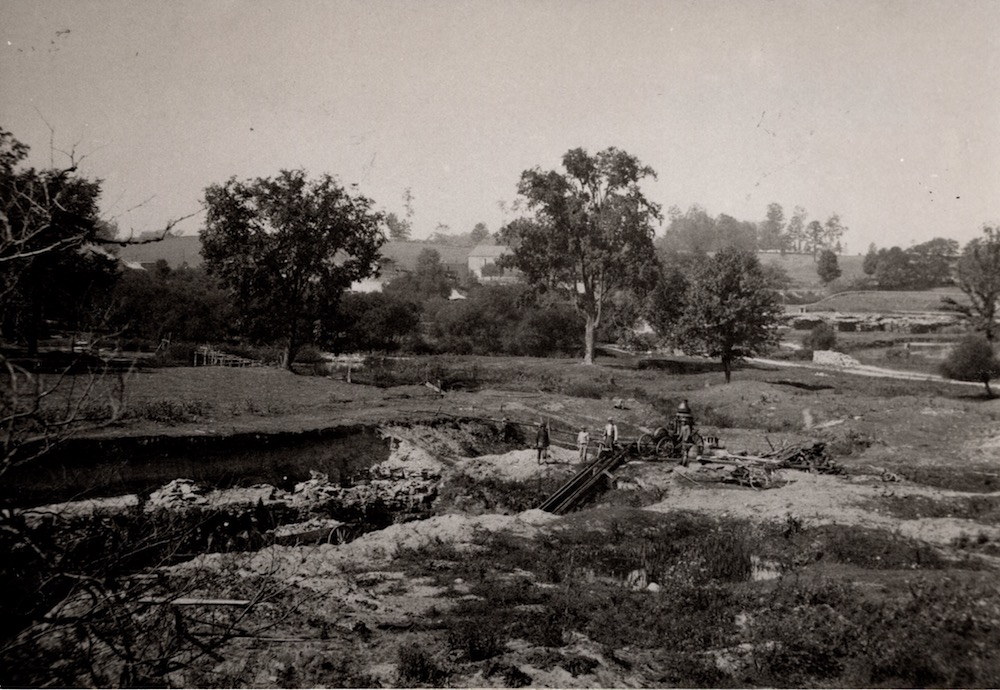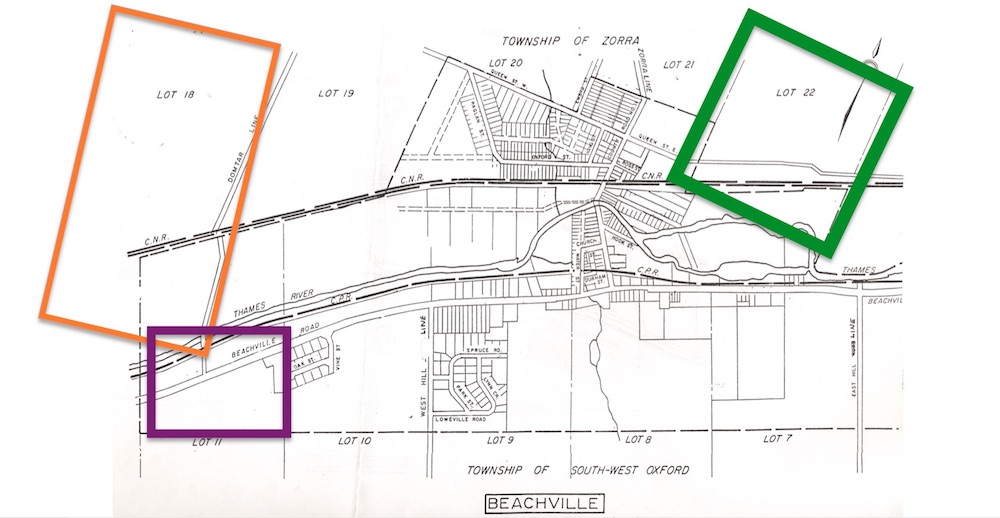The First Generation: Early Limestone Operations
Thomas Downing Sr. (1818-1900) is one of the earliest figures of Beachville’s lime industry. As a teenager, he apprenticed as a lime burner in England and worked at kilns spread around his hometown of Clovelly. He was called to Canada as a place of opportunity in the late 1840s. He settled in the Beachville area with his family in 1851 and started his lime business.
The Digging Begins
Thomas Downing worked with two partners, Edwin and John Dark, to initially produce lime east of the Village of Beachville. At a point when the riverbed and surface supplies were depleted, the lime burners started digging. They formed quarry holes at rock deposits near the earth’s surface. The topsoil was moved using wheelbarrows. Pits dug 5 feet deep were considered proper quarries when hand tools were used.
Downing and his partners leased land on West Oxford, Broken Front, Lot 2 (see red rectangle below). They built a kiln on the south bank of the river. Through the 1850s, they bought land at North Oxford, Lot 22 (see green shape outlines in both maps below). At this time, the Darks and Mr. Downing were the only lime burners listed in the area’s census.

A map showing the Village of Beachville and two pieces of land purchased by Thomas Downing and the Dark brothers, date unknown
A Shift West
By the 1860s, Downing moved to the west side of Beachville. He bought his first sole property at North Oxford, Lot 18, Concession 2, marked in orange. At this time, he owned 85 acres, but by 1876, he owned the entire Lot. The purple rectangle at West Oxford, Lot 11, marks several acres of land purchased by Alexander Bremner and Thomas Downing Sr. Extraction at these sites showed that limestone in the west was whiter and, therefore, purer in its composition than grey limestone in the east. This discovery ultimately shifted all operations west of the village.
A second generation of lime burners was already involved when quarry operations moved west. Thomas had recruited his sons to work at a young age. While Thomas Downing Jr. (1847-1916) and George Downing (1851-1944) ultimately chose to pursue farming professions, his second son, John Downing (1849-1938), took over the west quarry operations at age 13 (around 1862).



